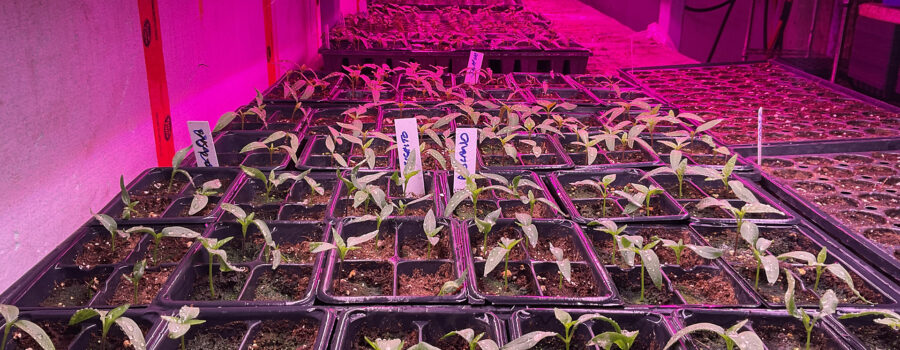Growing veggies from small, unassuming seeds is a wondrous process, even for the most experienced gardeners. Not to mention, it’s budget-friendly – much more so than buying nursery-grown plants.
The first step is to get your seeds sprouting, a process known as germination. Then, once green shoots have appeared, the seedlings must be nurtured until they’re big enough to transplant into their final position (unless you’ve direct sown them outside).
Germinating seeds successfully is a bit of an art in itself, but once you’ve got the know-how and a few basic tips up your sleeve, this first hurdle becomes easy to jump.
Until the weather warms growing edibles from seed should generally be done indoors.
This could be in a frost-free greenhouse if you have one, or simply on a warm windowsill.
Here are some simple steps you can follow:
- Gather the right materials:For most seeds, it’s best to use a seed starting tray with shallow cells, which you can find everywhere. You should also use the special soil for sowing seeds not traditional potting soil or garden soil, as it is too heavy. Seed compost should be fresh each year, and that seed trays, as well as lids and other seed-growing equipment, should either be new or disinfected. Some gardeners recommend stocking up on vermiculite a mineral that can be mixed with the soil to improve the flow of water and air around seeds and seedlings.
- Sow the seeds:‘Fill the seed-starting cell so the soil is about ¼ inch from the top of the container. Then, plant the seeds according to the required depth for that variety. Water the cells lightly to settle the soil.
- Provide an optimum growing environment:Place the tray in a bright place and keep the soil moist but not overly wet. For most seeds, a heat mat is beneficial but not required. To further increase the chances of successful seed starting, cover the tray with a humidity dome, a lid, or a layer of clingfilm.
- Continue to care for them as seedlings appear:As soon as the seeds sprout, the lid should be removed to encourage good ventilation which prevents fungal diseases. Thin out the seedlings that are growing too close together and, if possible, water the tray from the bottom, so that the compost stays damp and droplets are kept off developing leaves. Ensure they are still getting plenty of light, as not enough results in weak and leggy seedlings. If using a grow light it should be on for 16 hours and off for 8 hours.
Did you know Rumar Farm has arugula, Asian greens, black radish, sweet and hot pepper, kale, and melon seeds. You can also find 36 varieties of heirloom tomatoes and 13 unique varieties of super hot peppers. Just visit us at www.rumarfarm.ca and follow the “shop on-line” tab.
Congratulations to Sonja B for winning the Rumar Farm Newsletter contest. She will be happy to use her $25 gift certificate at the on-line store or the Welland market this summer!
Ruth and Marc
Rumar Farm
 Back to myNiagaraOnline
Back to myNiagaraOnline
































